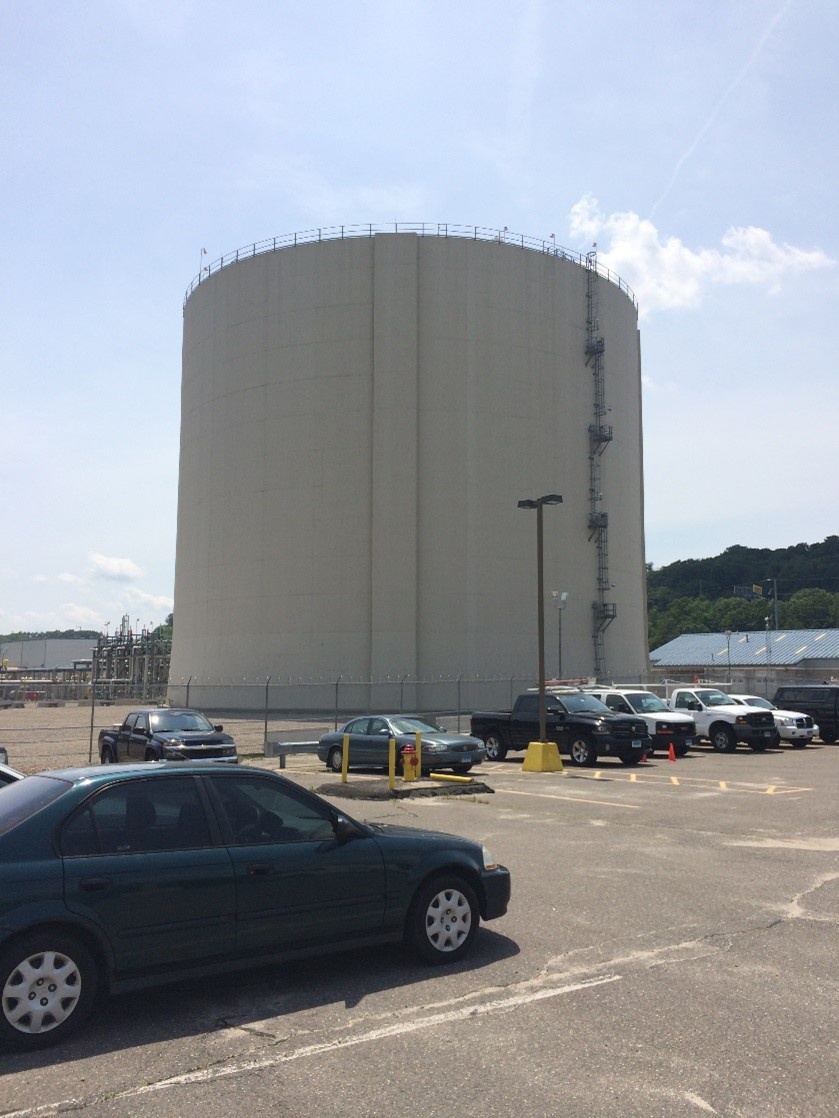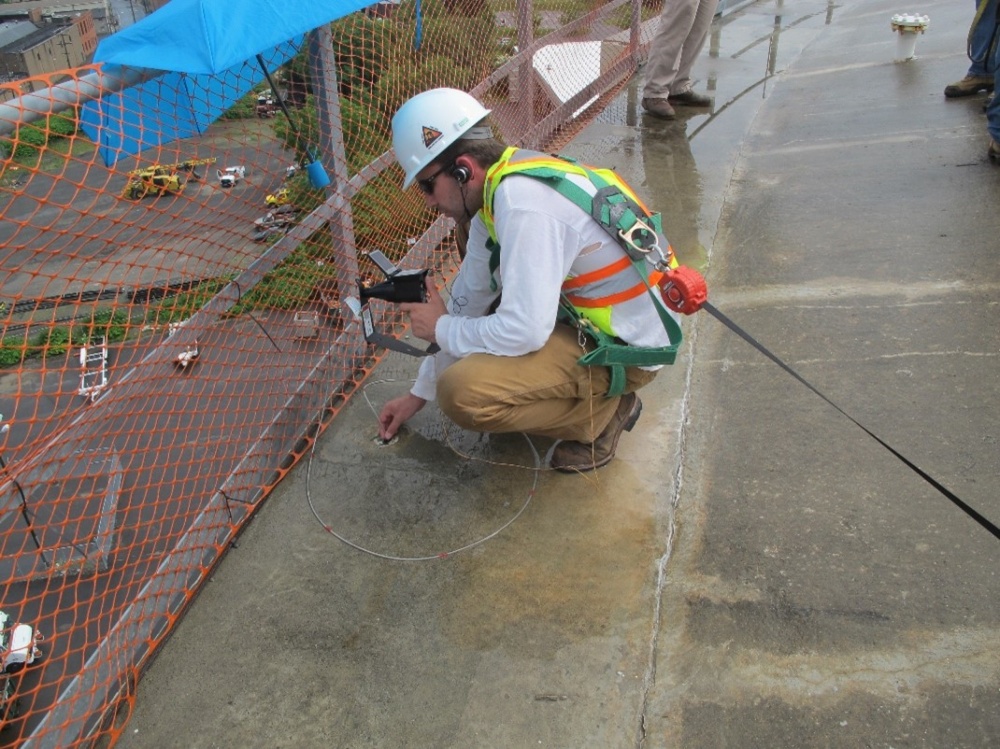Yankee Gas Liquid Natural Gas Tank

Services Applied by VCS Engineering
Project Description
VCS performed an investigation of a liquid natural gas (LNG) tank in Waterbury, CT to identify the extent and condition of voids located in the tank’s vertical post-tensioning ducts. Bonded PT duct voids were identified in a previous condition assessment conducted to develop appropriate maintenance strategies for the tank.
Project Issue
As part of the evaluation of the LNG storage tank, VCS Engineering assessed durability concerns within the post-tensioning system. A known challenge with grouted post-tension systems is the potential for voids to develop due to grout settlement and water migration, sometimes referred to as wick-induced bleed. These conditions can create long-term risks for reinforcement durability.
In this case, the owner was seeking assurance that the post-tensioning system would remain reliable over time. Because of the tank’s scale and dense reinforcement, direct access was limited, requiring innovative inspection methods to assess internal conditions.

Project Solution
As part of the project, VCS Engineering carried out a detailed durability assessment of the post-tensioning system. Inspection methods included borescope technology and targeted sampling to evaluate grout quality, strand conditions, and environmental exposure inside the ducts.
These advanced techniques provided valuable visual and analytical insight into the system’s condition. Working closely with the project’s design and construction partners, VCS helped develop recommendations to improve long-term durability through enhanced grouting strategies.